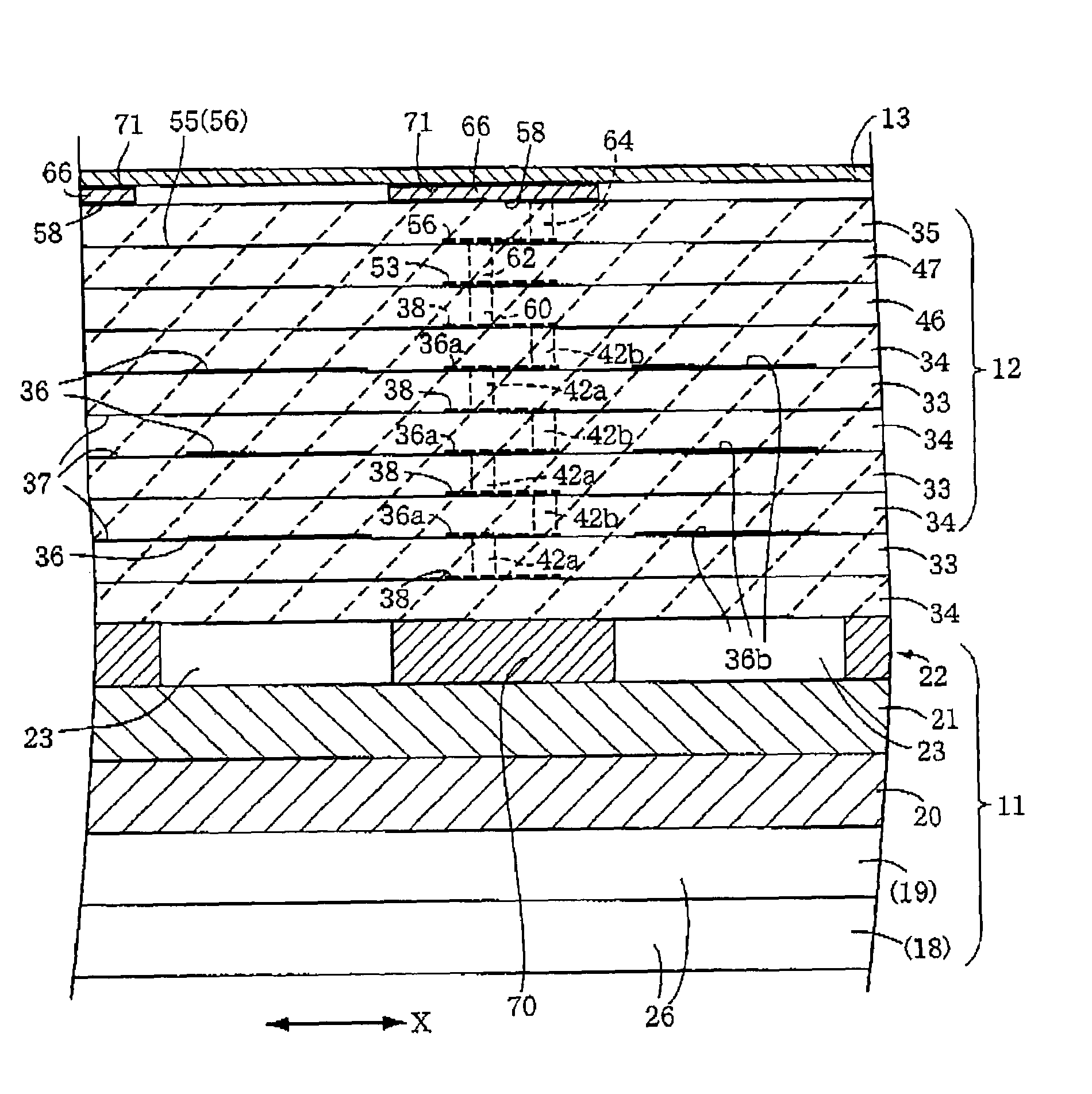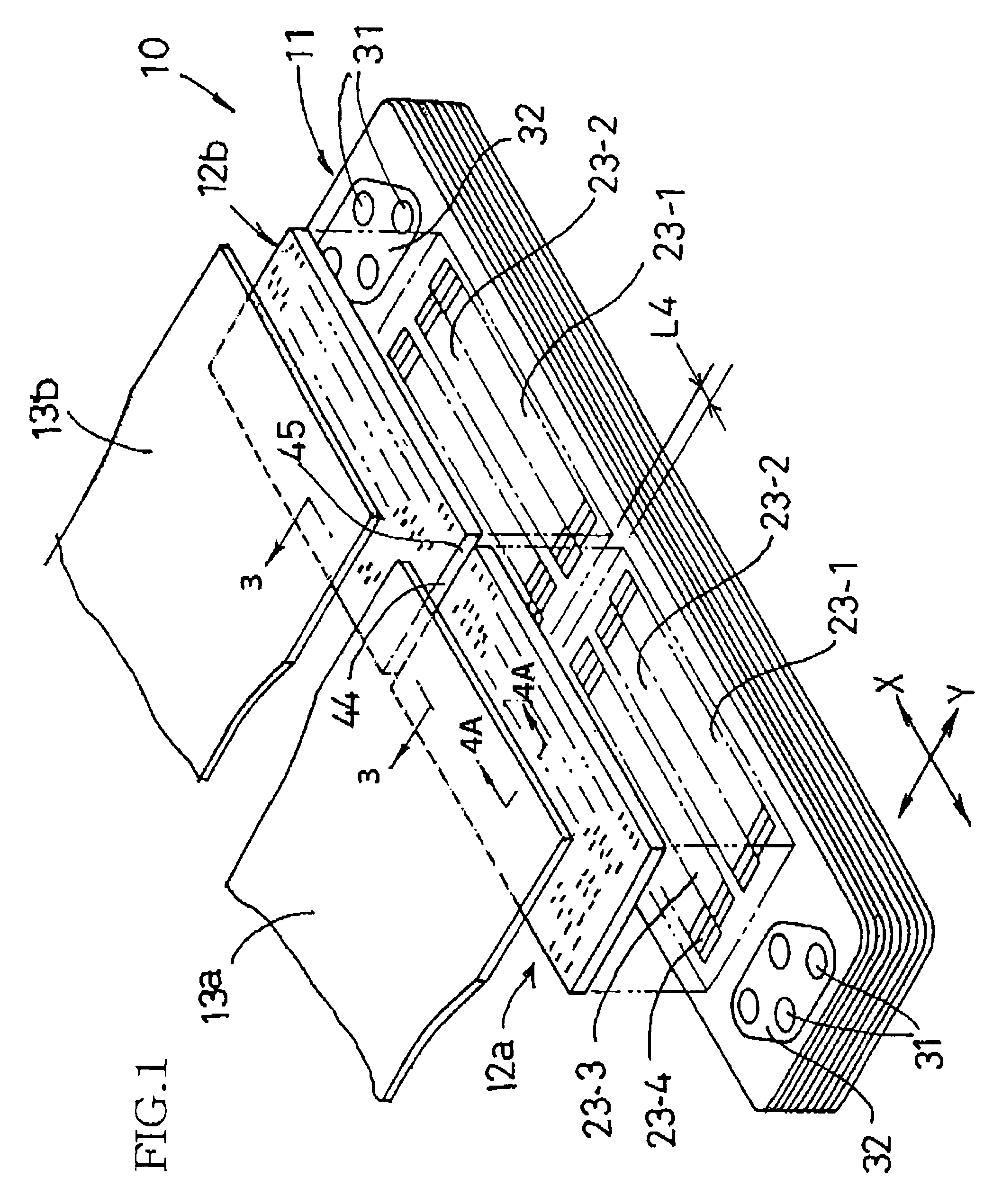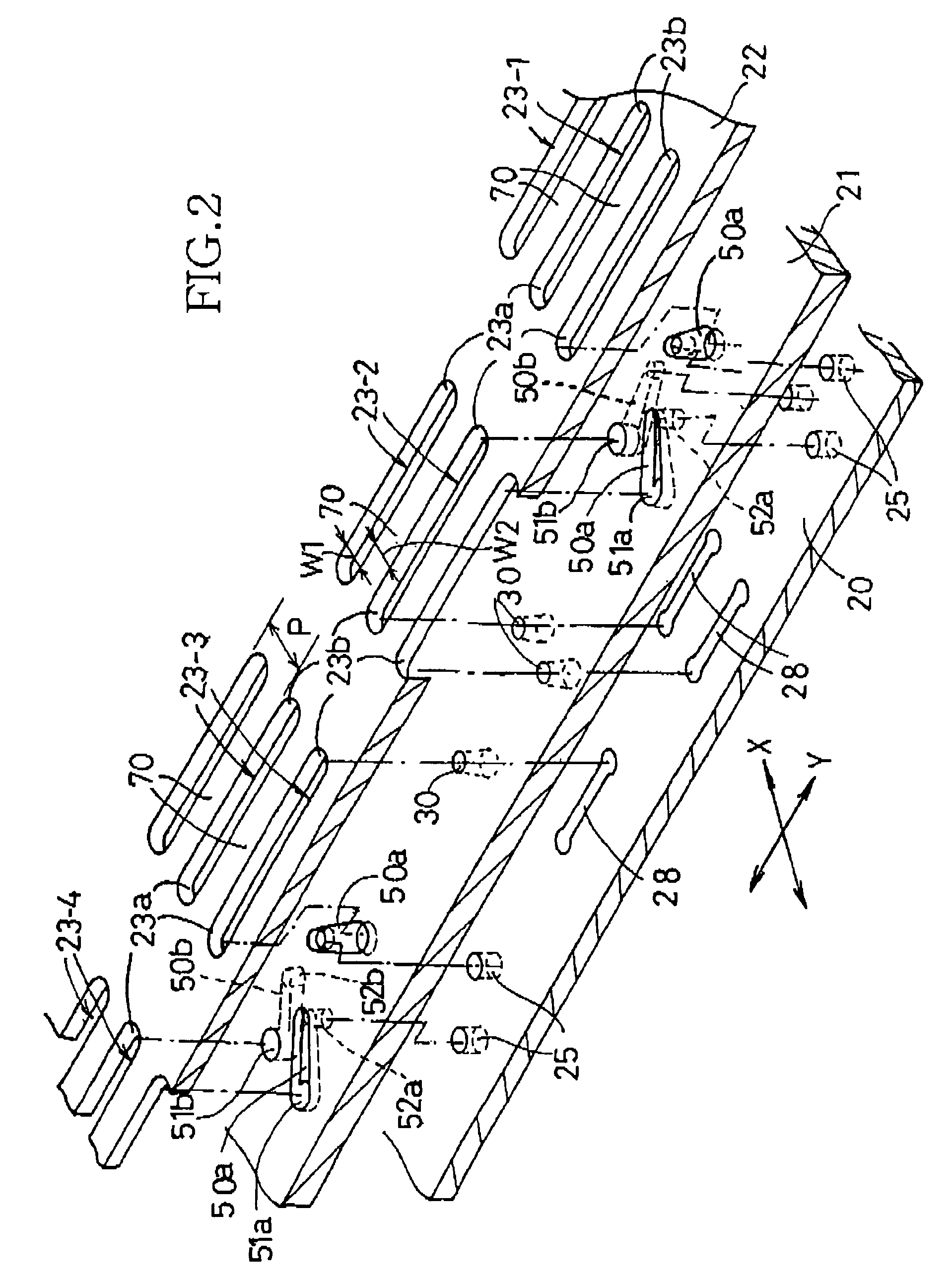Ink jet printer head
- Summary
- Abstract
- Description
- Claims
- Application Information
AI Technical Summary
Benefits of technology
Problems solved by technology
Method used
Image
Examples
Embodiment Construction
[0086]Hereinafter, there will be described preferred embodiments of the present invention by reference to the drawings. FIG. 1 shows a cavity unit 11 and a piezoelectric actuator 12 (i.e., two actuator units 12a, 12b) of a piezoelectric-type ink jet printer head 10 to which the present invention is applied; and FIG. 2 shows three sheet members each as part of the cavity unit 11, i.e., a base sheet 22, and a third and a second spacer sheet 21, 20 that are adjacent a lower surface of the base sheet 22. In FIG. 1, the sheet-stacked-type piezoelectric actuator 12 (i.e., the two actuator units 12a, 12b) is bonded to an upper surface of the metal-sheet-based cavity unit 11, and a flexible flat cable 13 (i.e., two cable units 13a, 13b; also see FIGS. 3 and 4A) as a sort of cable member is stacked on, and bonded to, an upper surface of the piezoelectric actuator 12. More specifically described, the two cable units 13a, 13b are bonded to the respective upper surfaces of the two actuator unit...
PUM
 Login to View More
Login to View More Abstract
Description
Claims
Application Information
 Login to View More
Login to View More - R&D
- Intellectual Property
- Life Sciences
- Materials
- Tech Scout
- Unparalleled Data Quality
- Higher Quality Content
- 60% Fewer Hallucinations
Browse by: Latest US Patents, China's latest patents, Technical Efficacy Thesaurus, Application Domain, Technology Topic, Popular Technical Reports.
© 2025 PatSnap. All rights reserved.Legal|Privacy policy|Modern Slavery Act Transparency Statement|Sitemap|About US| Contact US: help@patsnap.com



